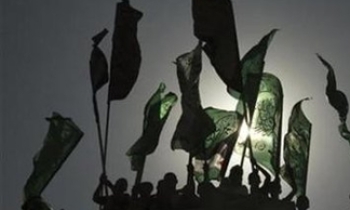Jubilation would be premature. The fragmented, multimedia world in which quality newspapers must fight for attention is too new and confusing for that. But the initial evidence contradicts every doom-laden forecast by rivals. The Independent on Sunday's June relaunch has been rewarded with a 17 per cent year-on-year sales rise and a month-on-month increase of 17.45 per cent. Following the move to a single main news section and one magazine, this newspaper sold an average of 245,952 copies per week in June, according to the Audit Bureau of Circulation.
Against the orthodox view that only multi-section Sunday titles can thrive, established by The Sunday Times in the 1980s, it took boldness to believe readers who said they wanted a more concise newspaper. But the logic of busy lives and nigh universal access to the internet suggested that, this time, they might be telling the truth. And in the first month at least, it looks like The Independent on Sunday's initiative has been richly rewarded.
Few of the newspaper's rivals in the quality Sunday market have similar reasons for optimism. The Sunday Telegraph, which experienced a less comprehensive redesign involving refreshed typeface, layout and masthead, achieved a year-on-year circulation rise of 1.09 per cent to 652,497 copies, but a slight decline of 0.39 per cent since May. The Observer was fractionally up (0.01 per cent) on the monthly calculation - following its free book of film giveaways to readers - but it suffered a year-on-year sales decline of 4.11 per cent. The ABCs are even worse for the original, vast, multi-section Sunday Times. It suffered the biggest annual decline of all the Sunday qualities, down 10.66 per cent.
Editor John Witherow is entitled to point out that his title has a lot further to fall than its rivals. A weekly sale of 1,173,956 copies means the News International title still dominates the quality sector. However, for all but the most innovative, this is a difficult market. Overall sales of quality Sunday titles are down by 164,987 copies since June 2006, and are now hitting levels not seen since 1990.
Daily quality newspapers fared a little better, but only the Financial Times achieved a year-on-year sales increase (of 0.95 per cent). The Guardian's sales fell by 4.38 per cent, The Times by 3.5 per cent, The Independent by 1.39 per cent and The Daily Telegraph by 0.93 per cent. All four also suffered modest month- on-month declines. In the mid-market, blue-top sector, Richard Desmond's Daily Express continued its tumble towards irrelevance. It lost 8.8 per cent of sales between June 2006 and June 2007. A month-on-month rise of 0.58 per cent between May and June will offer scant consolation.
The dominant Daily Mail continued to extend its now irreversible lead, but not without some pain of its own. Year-on-year sales were down by 1.57 per cent but the Mail retains a daily circulation of 2,303,438. Fortunes in the daily red-top market suggest that recent precipitous declines may be slowing slightly. The Sun lost 2.68 per cent of sales year on year but posted a monthly increase of 0.71 per cent. Its historic rival the Mirror fared worse, shedding 4.29 per cent of daily sales between 2006 and 2007 and compensating with only a 0.71 per cent monthly rise.
Among the popular Sunday titles, News International's News of the World fell to a fresh circulation low in June against a healthier than anticipated performance by rivals.
The NoW sold an average of 3,269,483 copies last month - down 1,270 or 0.04 per cent on May and 5.8 per cent on June 2006. Its Trinity Mirror rivals, the Sunday Mirror and The People, recorded month-on-month gains. So did Northern and Shell's Daily Star Sunday (up 3.59 per cent) as the red-tops added a total of 53,546 copies to their circulations from May to June.
Trinity Mirror will be particularly pleased with the Sunday Mirror, up 2.5 per cent month on month to 1,411,428 sales, and down only marginally (0.4 per cent) on the annual comparison. Editor Tina Weaver will be pleased. These are hard times to be a newspaper journalist. But the evidence is that innovation still works.
Tim Luckhurst is professor of journalism at Kent University









